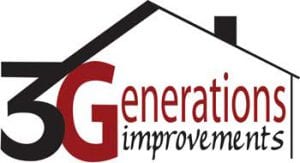For those familiar with Fibrex they typically think of windows. And rightly so as it is used primarily for window frame components in place of vinyl. However, Fibrex has been used as a welcome replacement for wood and then aluminum about 40 years ago.
What’s Great About Fibrex?
Perhaps a better question to ask first is, “What is Fibrex?”
According to a post at TheSpruce.com,
“Fibrex is Andersen’s patented PVC-wood composite material that it uses for a majority of its windows as a structural member. By weight, Fibrex is composed of 40-percent recycled Ponderosa pine wood fibers and 60-percent polyvinylchloride. Fibrex was initially developed to lower Andersen’s costs by reusing sawdust obtained from the production of its wood windows. One concern of exposed wood is rot. However, since each of Fibrex’s wood fibers is surrounded and coated with PVC, it rots at a far slower rate than pure wood.”
So, in a nutshell (or PVC shell, in this case) Fibrex is a variety of hardboard material with a vinyl wrapper. But it is really much more than that.
A common comparison of Fibrex window products is against vinyl. Vinyl, of PVC, has admirable qualities but also some downsides. Consequently, it helps that Fibrex is only 60 percent PVC and 40 percent recycled wood fibers. It has a higher heat distortion rate than vinyl, and its compressive strength is about two times that of vinyl.
That last point simply means that window frames made with Fibrex can use thinner frames allowing for more glazing, or “window glass” area, which allows that much more light into a room. And it looks like real wood, by the way. Something vinyl has a hard time with.
Windows are exposed to the sun and that means they are subjected to intense heat, depending on where you live. Most building materials have a certain degree of expansion in the heat, even plastics and metals.
However, the wood fibers that make up a large volume of Fibrex materials help to minimize its overall expansion rate. This means that It expands at less than half the rate of vinyl.
The Problems with Vinyl Windows
Vinyl definitely has its place in the construction realm and in windows in particular. But it has some issues.
For example, vinyl windows have a higher expansion and contraction rate, especially darker tints of vinyl, means distortion, flexing and bowing. And this increases the possibility of broken seals. Broken seals mean a shorter life for your windows.
One could argue, too, that vinyl window material is not nearly as eco-friendly as Fibrex, which is composed largely of recycled wood fibers. PVC, or polyvinyl chloride, is the world’s third-most widely produced synthetic plastic polymer, after polyethylene and polypropylene, according to Wikipedia.
And the most common use of vinyl is in construction, especially as vinyl flooring and vinyl siding.
Summing it Up
One concern is that Fibrex windows cost more than vinyl. Well, yes and no.
There are some vinyl windows that cost less than a comparable style made with Fibrex. However, not only do Fibrex come in lower-priced levels, when you consider the long-term value of a Fibrex window even a slightly higher price is “cheaper” than comparable lower priced vinyl window.
Why is that?
Under normal conditions, a Fibrex window will likely last far longer than a typical vinyl window. In fact, Andersen Windows-Doors provides a 10-year warranty on the Fibrex components of their windows. Given that the average homeowner in America sells and relocates on average about every six to seven years, this means their new Fibrex windows will still be going strong when the new owners move in.
This is not to say that vinyl windows are not good or that they even pale in comparison to those made with Fibrex. In fact, there are numbers of great lines of vinyl windows that can stand up to Fibrex in most areas and can often cost less to buy and install. In fact, we even have our own line of beautiful vinyl windows.

